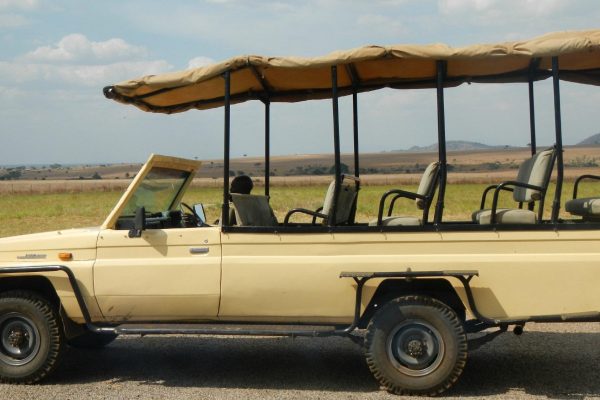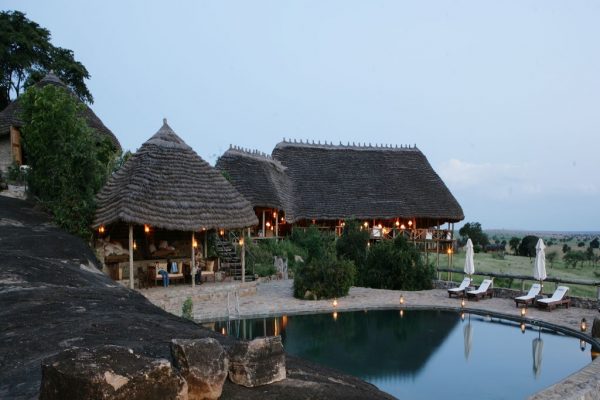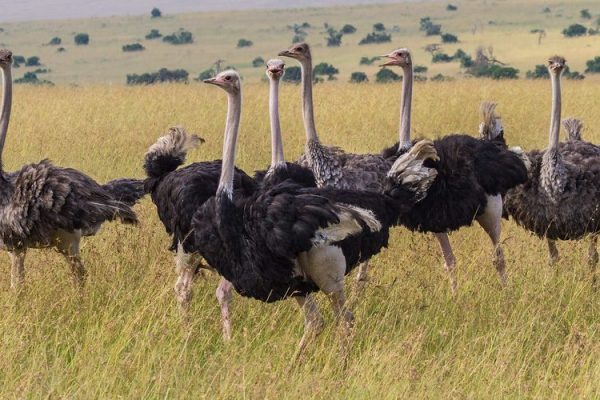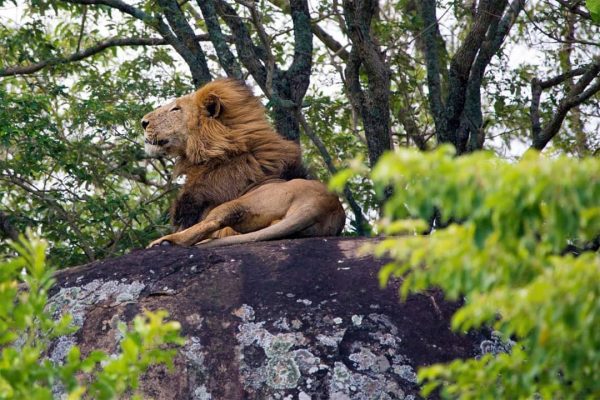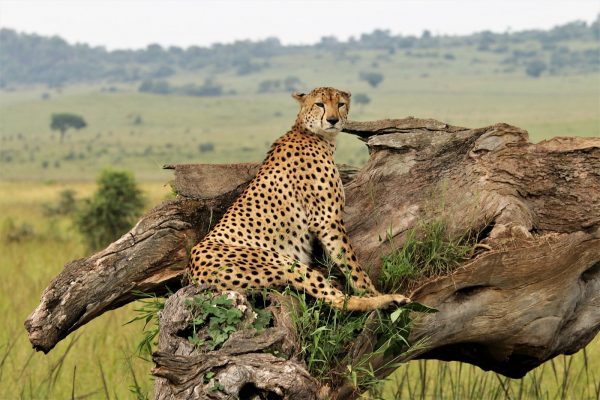Kidepo Valley National Park: A Complete Kidepo Safari Guide
Kidepo Valley National Park is the true African wilderness with its beauty that has mostly gone unnoticed as stated by CNN Travel. Kidepo National Park Uganda is a perfect wilderness to visit on any safari in Uganda.
The Kidepo Valley National Park is about 1,442 sq. km, hosting about 77 mammal species, 475 bird species several reptiles, and flora. The Dik-Dik (smallest antelope), cheetahs, ostriches, and Karamoja Apalis are endemic to Kidepo Valley National Park. Kidepo National Park is 1,442 square kilometers (557 sq. mi) Kidepo Valley National Park is in the Karamoja region in northeast Uganda. Kidepo is rugged savannah, dominated by the 2,750 meters (9,020 ft) Mount Morungole and transected by the Kidepo and Narus rivers.
Kidepo Valley National Park Safaris
Kidepo Valley National Park is located near Karenga in Kaabong District, in the northeastern corner of Uganda. The park is approximately 220 kilometers (140 mi), by road northwest of Moroto, the largest town in the sub-region. It is approximately 520 kilometers (320 mi), by road, northeast of Kampala, Uganda’s capital and largest city. The northwestern boundary of the park runs along the international frontier with Bira, South Sudan, and abuts its Kidepo Game Reserve
The Ketebo or Mining is the Inhabitant’s farmers and hunters who lived in the area since 1800 before it was gazetted as a game reserve by the British colonial government in 1958. The purpose was both to protect the animals from hunting and to prevent further clearing of bush for tsetse fly control. The eviction of the resident people and the resultant famine, especially the Ketebo people who were forcefully relocated to other areas within Bira such as Napotpot, Kalo Kudo, Namosingo, Loriwo, and Naurkori in South Sudan, is cited in contemporary protected area management as an example of the unacceptable consequences of not taking community needs into account when designating reserves. The newly independent government of Uganda under Milton Obote converted the reserve into the Kidepo Valley National Park in 1962. The first chief warden of the park was Ian Ross, a Briton. In 1972, Paul Ssali, a Ugandan, replaced him. Their handover and training were the subjects of the 1974 American documentary film, “The Wild and the Brave”
Kidepo Valley Safaris
Unspoiled and unspoilt, this African savannah features expansive rocky ranges, verdant fields, and clear blue skies.
A vast, rugged savannah area overshadowed by Mount Morungole, Kidepo is one of the last remaining large wilderness places in Africa. Located in a remote region of Uganda, cut off from the rest of the country by the rugged plains to the north of Mount Elgon, Kidepo Valley National Park is the second-largest national park in the country and, in our view, the greatest. Big skies, enormous rocky mountains, and verdant grasslands studded with antelope, giraffe, zebra, lion, elephant, buffalo, cheetah, and ostrich make this wild and distant place breathtaking. An unparalleled feeling of seclusion characterises a safari in the Kidepo Valley, a unique and unspoiled corner of Africa.
You can see examples of what is achievable in the Kidepo safaris and tours provided below. Make use of these itineraries as guides or as sources of ideas. Then contact us, and we’ll send over our professional staff to assist you in creating the ideal schedule.
Murchison Falls And Kidepo
A safari combining Murchison Falls and Kidepo Valley National Parks offers a diverse Ugandan wildlife experience, typically lasting 5-9 days. Key activities include game drives, a boat cruise on the Nile, and visiting the Murchison Falls itself, while also seeing unique wildlife and landscapes in Kidepo.
4 Day Kidepo Safari
A 4-day Kidepo safari typically involves long drives to and from Kampala, with two full days dedicated to activities like game drives, hot springs walks, and cultural visits to the Karamojong community. It’s a popular choice for those seeking a unique, remote safari experience in Uganda, though it requires a significant amount of travel time for such a short trip.
Kidepo And Pian Upe Safari
A safari combining Kidepo Valley and Pian Upe is an excellent way to experience Uganda’s diverse wildlife and landscapes, offering both a classic large-game safari in Kidepo and a more rugged, wilderness-focused experience in Pian Upe. The two are geographically close, making them ideal for a multi-stop trip that showcases different aspects of Ugandan wildlife, from the big cats and elephants in Kidepo to the unique species like the roan antelope and cheetah in Pian Upe.
Murchison Falls, Kidepo & Pian Upe
A safari combining Murchison Falls, Kidepo, and Pian Upe is a multi-park Ugandan adventure focusing on varied landscapes and wildlife. Murchison Falls offers classic savannah game viewing with hippos, crocodiles, and elephants along the Nile, while the remote Kidepo Valley is a vast wilderness known for unique species like the roan antelope and ostriches. Pian Upe, though not always on the typical tour route, is a significant conservation area that could be combined with Kidepo.
9 Day Uganda Safari
A 9-day trip incorporating Ziwa Rhino Sanctuary, Murchison Falls, Kidepo, Sipi Falls, and Nile rafting requires significant travel time, so a realistic itinerary would need to prioritize and condense these locations. A possible 9-day route could be: days 1-2: Arrive Entebbe, transfer to Ziwa, and begin Murchison Falls National Park. Day 3: Murchison Falls game drive and boat trip, drive towards Kidepo. Day 4-5: Explore Kidepo Valley National Park.
Bwindi And Kidepo Safari
A Bwindi and Kidepo safari combines a gorilla trekking experience in Bwindi Impenetrable National Park with a wildlife viewing and cultural experience in the remote Kidepo Valley National Park. These safaris are often fly-in to maximize time, as the parks are in opposite ends of the country. The itinerary typically includes gorilla trekking in Bwindi and game drives and cultural tours with the Karamojong people in Kidepo.
Gorilla Trekking And Kidepo Safari
A combined Gorilla Trekking and Kidepo Safari offers two distinct Ugandan wildlife experiences: the remote wilderness and savannah of Kidepo Valley National Park and the unique, intimate encounter with mountain gorillas in Bwindi Impenetrable National Park or Mgahinga National Park.
25 Days Uganda Safari
A 25-day Uganda safari can include extensive primate tracking, wildlife viewing, and adventure activities, often combining destinations like Kibale, Queen Elizabeth, and Bwindi Impenetrable National Park. A 25-day itinerary allows for unique experiences.
30-day Uganda Birding Trip
A 30-day Uganda birding trip is an extensive safari that covers diverse habitats like rainforests, swamps, and savannahs, including key locations such as Bwindi Impenetrable Forest, Murchison Falls, and Semliki National Park. The itinerary typically includes opportunities to see a wide array of species, including Albertine Rift endemics, the Fox’s Weaver, and the Shoebill, and often incorporates other wildlife activities like gorilla and chimpanzee trekking.
18 Days Uganda Safari
An EPIC 18-day Uganda self-drive safari itinerary typically includes a combination of national parks and activities like game drives, chimpanzee trekking, and gorilla trekking. A possible route could start in Kampala, move to the Murchison Falls and Ziwa Rhino Sanctuary, then head to Kibale for chimpanzees, Queen Elizabeth National Park for boat cruises, Bwindi for gorillas, and finish with relaxation and cultural visits around Lake Bunyonyi. Other possible additions include the Source of the Nile in Jinja, Sipi Falls.
Things to Do in Kidepo Valley National Park
In Kidepo Valley National Park, you can go on safaris for wildlife viewing, hike Mount Morungole for stunning views and a visit to the Ik people, or go birdwatching to see over 475 species. Other activities include observing ostriches, visiting the Kidepo River and Narus River areas, and combining the trip with other Uganda activities like gorilla trekking.
1. Narus Valley Game Drive;
The southerly Narus Valley contains the park’s only permanent water points and wildlife congregates in this area for much of the year. Look for buffalo and elephants in the swamps along the valley floor, giraffe, and eland on the drier slopes above, and scan the rock outcrops for lions.
Apoka game drives are the most efficient way to cover a lot of ground quickly in the park. It is a once-in-a-lifetime opportunity to see predators and big cats up close and personal from the comfort of your car.
In the Narus Valley, where you can see a wide variety of animals, most drives stick to one of two 20-kilometer loops. Even during the dry season, there is a little amount of water here, which draws enormous herds of buffalo, elephants that are thirsty, and antelope. Many stunning species can be seen when herbivores congregate, which in turn attracts predators.
Game drives leave in the wee hours of the morning and late afternoon during the hot and dry season. At this time, the animals are at their most active, and you can take pictures at the optimal lighting conditions.
Although there is less wildlife in the drier Kidepo Valley, you should still make the effort to explore its stunning natural splendor. Keep your eyes peeled, but keep your attention on the Kanagorok hot springs, which are located 30 kilometers north of Apoka. Take it easy as you wind your way past mountain-framed plains and the Kidepo River, which has a broad sand bed during the dry season. While the heavier bush provides cover for the kudu, this is the ideal spot for secretary birds and ostriches.
2. Kidepo Valley Drive;
The dry Kidepo Valley is short on the big game but massive on scenery 30km north of the park’s tourism hub at Apoka, the road crosses the dry, sandy bed of the Kidepo River to enter an expansive plain lined to the east by the Morungule mountain range and to the north by the looming, 2975m – high Jebel Lotuke in South Sudan. Mammals are rare in this area but ostriches and secretary birds are often seen.
3. Nature Walks;
Opportunities for guided walks range from short nature walks around Apoka Rest Camp to longer walks through the open grasslands of East Kakine, and a hike along part or all of the 15km Rionomoe Trail which follows the southern side of the Narus Valley. The Morungule range, which rises from the plains to the northeast of Apoka, can be explored on foot with a ranger guide escort.
4. Bird Watching;
Experienced ranger guides are available at Apoka to help locate and identify birdlife in the park’s various habitats.
5. Community Walks;
community walks outside the park provide the opportunity t learn about life in the local Karamojong manyattas (homesteads) at Kawalakol, Lorukul, and Karenga.
6. Wildlife in Kidepo
Among Uganda’s national parks, Kidepo ranks third in size and second in biodiversity, behind only Queen Elizabeth National Park.
Kidepo is a fantastic place to go game viewing, and it’s home to 77 different kinds of mammals. There are twenty different predator species, including spotted hyenas, leopards, and lions.
Aardwolf, caracal, black-backed jackal, bat-eared fox, cheetah, and Kidepo are all native to Uganda. Over fifty Rothschild’s giraffes, an internationally significant population, are present, and the elephant number is over 650, up from 200 in the mid-1990s. The buffalo population is estimated to be over 10,000.
In the thick jungle, you can spot kudu, both larger and smaller, while zebras graze on the plains. A white-eared kob, which is more prevalent in South Sudan and Ethiopia, may even be spotted by lucky adventurers.
There are 470 species of birds on the list at the moment. No other national park in Uganda has 60 of them. Kidepo is home to the sole population of the rose-ringed parakeet and Clapperton’s francolin in East Africa. Vultures are doing quite well, and the park is home to 56 different species of raptors. Additionally, birdwatchers will never get a better chance to see the majestic Common Ostrich than in Kidepo, Uganda.
Best time to Visit Kidepo Valley National Park
Any time of year is fine to use Kidepo. On the other hand, the weather there is generally different from the rest of Uganda. Although June was once considered a dry month, it is now widely acknowledged that a lengthy rainy season will begin in April and continue until the end of November. Even though it won’t be a downpour for eight months, rain is likely to fall on most days.
From December to March, we experience the dry season. During this time, the temperature might jump above 40 degrees Celsius. Due to the park’s sandy soils’ inability to retain water, wildlife sightings are more common between November and February, the middle and end of the dry season.
In these months, when water sources are scarce, animals gather near water holes that they know will provide a steady supply, boosting the likelihood of sightings. Also, the short grass plains offer the greatest opportunity to spot cheetahs hunting.
Animals, on the other hand, tend to avoid lowlands during the wet season (April–August) in favor of higher ground, when sightings are less often.
How to Get to Kidepo Valley National Park
By road:
From Murchison Falls, most tourists drive the seven hours or less required via the sealed road. Spending the night close to Sipi Falls is an option for some tourists who want to break up the trek. Kidepo is 571 kilometers away from Kampala. Few people opt for the difficult 10-hour drive from Kampala via Gulu and Kitgum.
By air:
A few light aircraft firms fly into the airfield near Apoka, which serves Kidepo. Flights on these routes are expensive for solo travelers or small groups due to their limited schedule and minimum passenger requirements, but they’re manageable for families or bigger groups. Don’t let that deter you, though; taking off from Entebbe and gliding over the dramatic Murchison Falls before continuing on to the Kidepo expanse is an unforgettable experience.
Kidepo Valley National Park Accommodation
While researching places to stay in Kidepo Valley National Park, it’s important to keep in mind that this is a nature preserve in northeastern Uganda. With a variety of lodging alternatives to fit any traveler’s budget and tastes, the park is famous for its untamed landscapes, varied animals, and unspoiled beauty.
You will have accomplished the correct thing and gotten a genuine taste of nature if you go to Kidepo Valley. Camping isn’t an issue; the park offers a wide selection of housing options, from expensive hotels to more affordable options. Comfortable housing is available in each of these styles. Not only that, but they provide great service and serve tasty food from all around the world. Kidepo Valley National Park offers a variety of lodging options, including:
Kidepo Valley National Park Reviews
L’Afrique Profonde
Kidepo is not easy to get to. Any overland drive from greater Kampala will realistically take two days with an overnight stop somewhere, and the second day from any direction will involve hours bouncing on unpaved laterite ‘murram’ roads. Kidepo is located in what could be called Uganda’s ‘empty quarter’, where Uganda, Kenya, and South Sudan come together. Other Uganda parks offer great wildlife viewing with more tourist-friendly logistics. But only a few places we have seen in our travels – Alaska, where we were privileged to live for over a dozen years, southern Utah, Chile’s Torres de Paine – offer the ‘dawn of creation’ landscape that Kidepo offers. At Kidepo you find top class wildlife (that includes Uganda’s only resident zebra and eland) in breathtaking and silent vistas. Sunset and sunrise scenes are uniquely haunting. The game drive tracks through the park are much less traveled than those at Murchison or at Queen Elizabeth. The accommodation options rival those anywhere in East Africa. Most any African park destination will meet the expectation framed in the words “once in a lifetime”. A visit to Kidepo just may redefine your whole bucket list.
Date of experience: April 12, 2021
Client: Richard R From GB
Still unspoilt!
On a family visit to Uganda, we were told about Kidepo. We have had an unforgettable visit to this amazing sanctuary tucked away in north Uganda. Its not as well known as its Kenyan or Tanzanian cousins, which means fewer tourists and a more enjoyable game watching experience. We stayed at the Apoka Rest Camp – a set of Uganda style circular rooms called ‘bandas’ with ensuite shower and toilet. It was delightful to step out of our room to see the pumbas trotting around, the jackals loping about at night and in the early mornings, the waterbucks drinking at the waterhole in the camp and, of course, the gorgeous African sunrise and sunset. Not to forget a memorable road-side leopard sighting in broad daylight.
Must do’s include game drives, including the drive to see the ostriches, and the guided walk with a ranger. This reserve has the largest number of Cape buffaloes anywhere, apart from the easily sighted antelopes and deer, elephants, giraffes, zebras and a huge variety of birds, and the not so easily sighted lions – we heard the lions roaring in the vicinity of the camp.
A must go when visiting Uganda.
Date of experience: Dec 2018
Client: sudsen From Mumbai, India
Go camping!
The Kidepo Valley National Park is quite unique when you compare it to the other Ugandan National Parks. This place is perfect for people who want to avoid mass tourism and who don’t have the big 5 as a priority (you can spot them all however).
Please take your time here and please camp outside to get the best experience. The nature is so stunning, you won’t be disappointed.
Next to game drives, you can also opt for a guided walk or a village tour. The village tour is quite interesting as you drive further into the park and you get to know the Karamojong people. I would not advise the guided walk.
Date of experience: Aug 2017
Client: ilpaulus From Udine, Italy
Kidepo Bush Camping is the best!
My wife and I drove ourselves from Kampala to Kidepo and camped out at the UWA campsite right in the middle of the park. An armed ranger spent the night to protect us from the lions we heard roaring not far away. The next morning we found them high on some rocks just over 2 km away. Over a thousand Cape Buffalo ran across the valley floor below us, and we found dozens of elephants with young ones in tow near the river. Best of all – we had the whole park to ourselves with only one other vehicle spotted in three days.
Simply put – even in the rainy season (May), we saw amazing wildlife and stunning beauty. This park is a few bars above all others in Uganda.
Date of experience: May 2018
Client: Clownfish33 From US
Journeys You May Be Interested In
- 2 Days Gorilla Trekking Uganda
- 2 Days Murchison Falls Safari
- 2 Days Lake Mburo Safari
- 2 Days Queen Elizabeth
- 3 Days Gorilla Trekking Safari
- 3 Days Murchison Falls Tour
- 3 Day Uganda Gorilla trekking
- 3 Days Luxury Gorilla Trekking
- 4 Days Kidepo Safari
- 4 Days Murchison Falls
- 5 Days Gorilla Trek Uganda
- 6 Days Uganda Trip


